How Greenhouses Work: The Science Behind It
Greenhouses have been used by gardeners for centuries — but what makes them so effective? Whether you're nurturing tender seedlings, growing tomatoes through the British summer, or keeping plants alive over winter, the secret to a successful greenhouse lies in the science behind it.
Understanding how greenhouses work can help you get the most from your growing space. From trapping warmth to creating the perfect environment for plant growth, the science behind greenhouse gardening is surprisingly simple — yet incredibly effective.
In this article, we’ll break down the basic principles that make greenhouses so powerful. You’ll learn how they retain heat, regulate humidity, and use natural sunlight to create a stable, plant-friendly climate — even in the unpredictable UK weather.
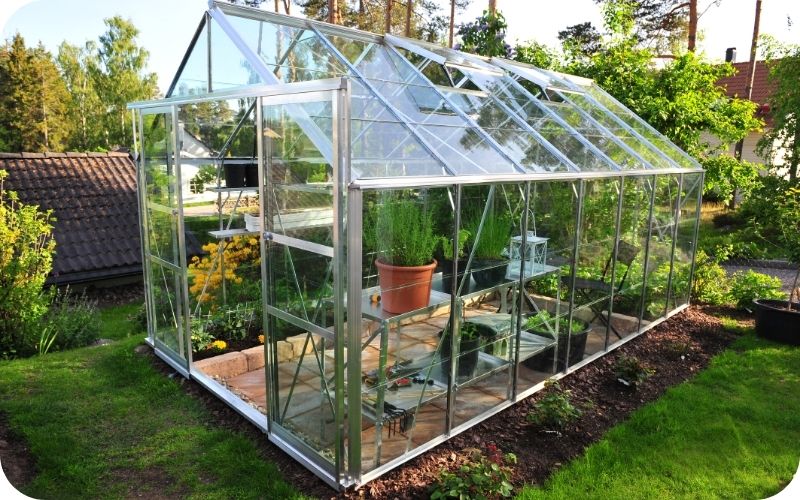
What Is a Greenhouse?
At its core, a greenhouse is a sheltered structure designed to create a controlled environment for plants. It protects crops from the harshest elements while maximising exposure to the one thing they need most: sunlight.
Greenhouses are typically made from a metal, wood, or steel frame, with transparent panels made of glass or polycarbonate. These panels allow light in while trapping heat — creating a warm, stable space that’s ideal for growing a wide variety of plants, from herbs and flowers to fruits and vegetables.
In UK gardens, greenhouses are commonly used for:
- Starting seeds earlier in spring
- Extending the growing season into autumn and winter
- Growing heat-loving crops like tomatoes, cucumbers, and chillies
- Protecting delicate or exotic plants from frost and wind
Whether you’re a seasoned grower or a complete beginner, the appeal of a greenhouse is simple: it lets you take control of your growing environment, regardless of what the weather’s doing outside.
The Greenhouse Effect Explained
The magic of a greenhouse lies in a simple but powerful natural process known as the greenhouse effect. While the term is often associated with climate change, it’s also the core principle that makes garden greenhouses so effective.
How It Works
When sunlight enters a greenhouse, it passes through the transparent glazing (glass or polycarbonate) as short-wave solar radiation. This energy is absorbed by the surfaces inside — like the floor, pots, and plants — and then re-radiated as long-wave infrared heat.
Here’s the key: while sunlight can easily pass through the glazing, infrared heat cannot escape as easily. The greenhouse structure traps this warmth inside, causing the internal temperature to rise — even when the outside air is much cooler.
A Simple Analogy
Think of it like getting into a car on a sunny day. Even if it’s chilly outside, the inside of the car quickly becomes warm because the windows let sunlight in but trap the heat. A greenhouse works the same way — only with better ventilation!
Why It’s So Useful for Gardeners
This trapped heat allows you to:
- Start growing earlier in the year
- Maintain warmer temperatures overnight
- Grow crops that wouldn’t normally survive in the UK climate
- Create a more stable environment that encourages healthy growth
It’s not just about heat either — this process also helps manage humidity and protects plants from wind, rain, and frost.
Trapping Heat: How Greenhouses Stay Warm
The true strength of a greenhouse lies in its ability to retain the warmth generated by sunlight. This makes it possible to maintain higher internal temperatures than those outside — even in early spring or on a chilly autumn morning.
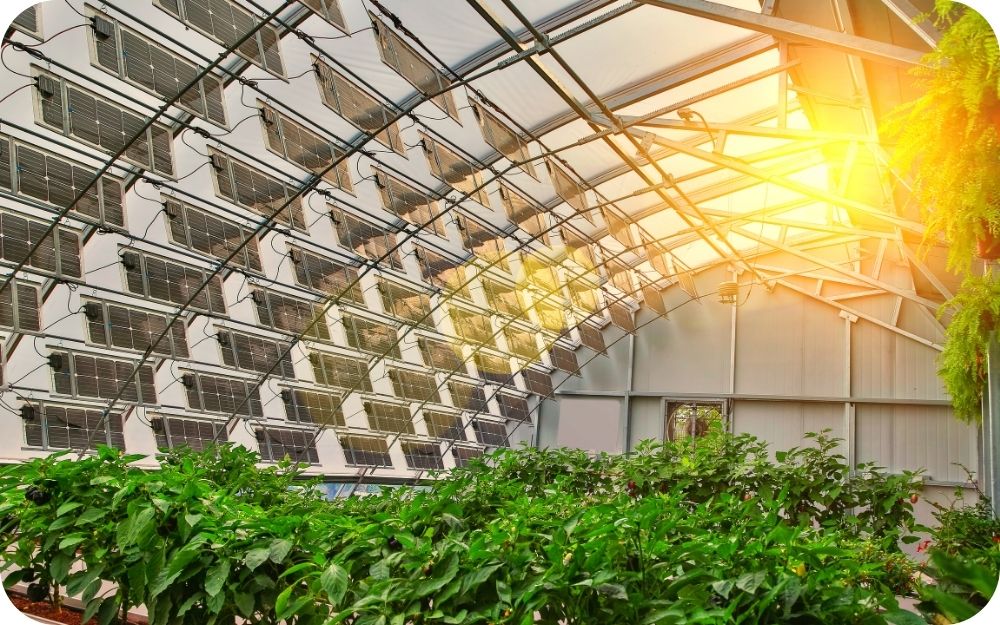
Sunlight In, Heat Stays In
As covered in the previous section, sunlight passes through the transparent glazing and warms up the objects inside — including the soil, staging, and even the plants themselves. These surfaces then radiate that heat back into the air, increasing the temperature within the greenhouse.
Because the structure prevents this warmth from escaping quickly, the result is a warmer, more stable environment for plants — especially beneficial during cooler months or overnight when outdoor temperatures drop sharply.
The Role of Glazing Materials
Different glazing materials affect how well a greenhouse retains heat:
Glass allows high light transmission but offers limited insulation. Heat escapes more quickly, meaning glass greenhouses can cool down rapidly once the sun goes in.
Polycarbonate glazing, especially twin-wall panels, features an air gap between two layers. This acts like double glazing in a home, creating a natural insulating barrier that traps more warmth and slows heat loss.
This is one of the main reasons why polycarbonate greenhouses are preferred for year-round growing — they’re better at keeping the heat in, even when the sun disappears.
Ground Heat Matters Too
Soil and hard surfaces inside the greenhouse also play a role in temperature regulation. During the day, they absorb heat, then slowly release it back into the air after sunset — helping to keep the temperature more stable overnight.
For this reason, many gardeners opt for solid greenhouse bases like paving slabs or thermal mass materials that hold heat for longer.
Maintaining a Stable Environment
While a greenhouse naturally traps heat, keeping conditions stable and suitable for healthy plant growth takes a bit more thought. Factors like temperature, humidity, and airflow all need to be balanced to create the ideal growing environment — especially if you're aiming for year-round use.
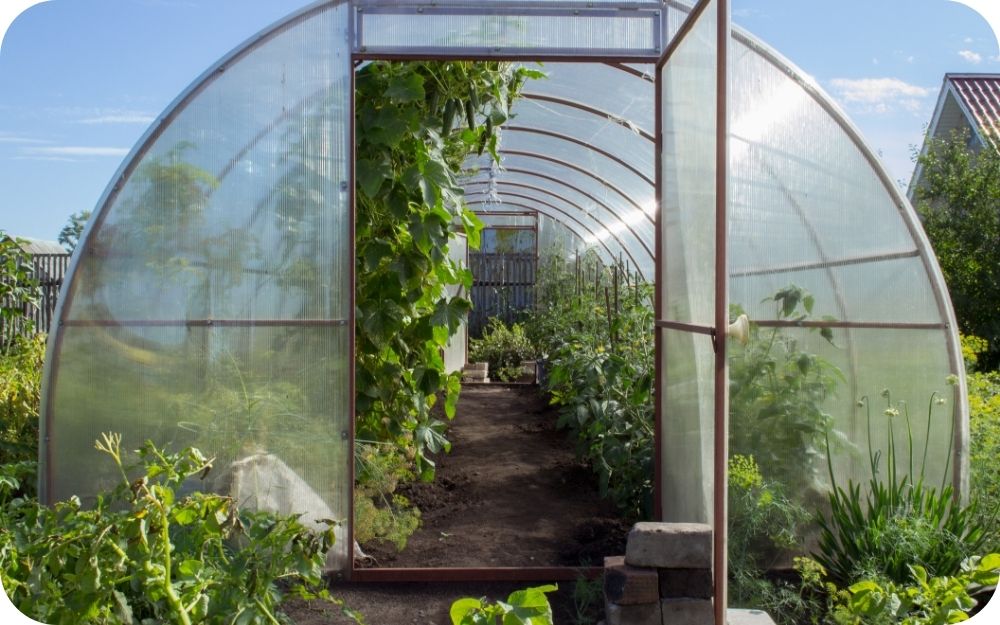
1. Temperature Control
A greenhouse can heat up quickly during the day, especially in summer or on bright spring mornings. But without proper ventilation, this can lead to overheating, which stresses plants and dries out soil.
To maintain a steady, plant-friendly temperature:
- Use roof vents and louvre windows to allow hot air to escape
- Open the door during warm days to promote airflow
- Fit automatic vent openers for hands-off temperature regulation
- In winter, use bubble wrap insulation or low-energy heaters to prevent frost
This combination of ventilation and insulation is what allows gardeners to grow earlier in spring and extend the season well into autumn.
2. Humidity and Moisture
Greenhouses naturally hold in moisture from watering and plant transpiration, which boosts humidity — a big benefit for seedlings and tropical plants. However, too much humidity without airflow can lead to mould, mildew, and fungal diseases.
To manage moisture levels:
- Water early in the day to allow excess humidity to clear
- Avoid overwatering, especially in winter
- Ensure good airflow through vents or fans
- Remove dead leaves and keep surfaces clean to reduce mould risk
Maintaining balanced humidity helps prevent common greenhouse issues and keeps your plants strong and disease-free.
Light and Plant Growth
While heat and humidity are important, light is the most essential ingredient for plant growth. It powers photosynthesis — the process plants use to convert light into energy — and directly affects how quickly and successfully your crops develop.
In a greenhouse, light becomes even more critical. The enclosed structure means you’re relying almost entirely on natural sunlight to fuel plant life, so how light is managed and distributed plays a major role in your success.
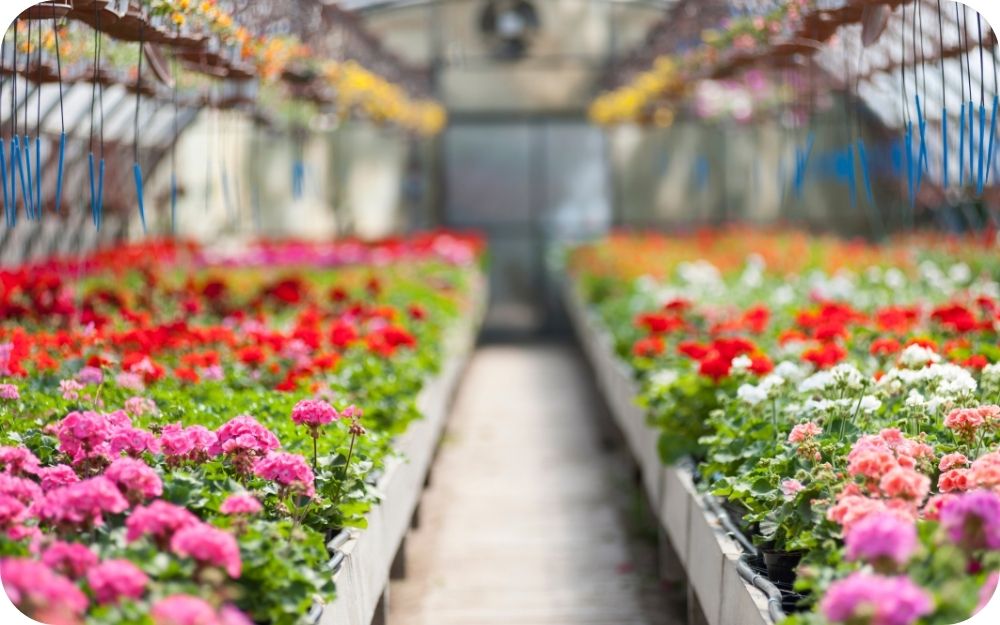
How Greenhouses Maximise Light
Greenhouses are built with transparent or translucent materials specifically to capture as much light as possible. The glazing lets sunlight pour in, creating an environment that’s warm, bright, and protected — perfect for growing even when outdoor conditions are far from ideal.
To get the best results, your greenhouse should:
- Be positioned to catch full sun, especially during the morning and early afternoon
- Use clean, clear panels to prevent reduced light transmission
- Avoid large trees, fences, or buildings casting shade
Diffused vs Direct Light
Not all sunlight is equal. Direct sunlight, like you’d get through clear glass, can be intense — sometimes too intense — leading to scorched leaves or overheated seedlings in summer.
Polycarbonate glazing, especially twin-wall panels, naturally diffuses light. This means it scatters sunlight evenly throughout the greenhouse, reducing hotspots and ensuring:
- More uniform plant growth
- Lower risk of sun scorch
- Better light coverage across shelves and staging
This is one of the reasons polycarbonate is such a popular choice among home growers — it creates a gentler, more balanced light environment that plants love.
Benefits of the Greenhouse Environment
Now that we’ve covered how a greenhouse works, let’s look at what that means for you as a gardener. When all the elements come together — heat retention, humidity control, light access, and protection from the weather — you get a growing environment that offers real, measurable benefits.
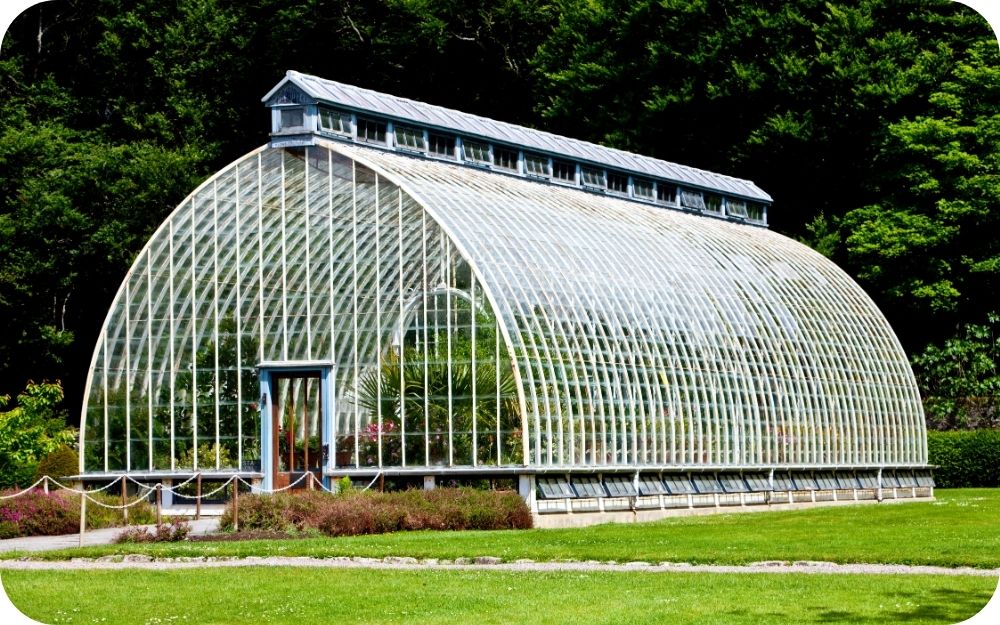
1. Extended Growing Seasons
One of the biggest advantages of a greenhouse is the ability to start growing earlier in spring and continue later into autumn. With a bit of added insulation or heating, many gardeners even grow year-round — something that’s simply not possible outdoors in the UK.
This means:
- Earlier seed germination
- Longer harvest windows
- Better planning and succession planting
2. Protection from the Elements
Wind, frost, heavy rain, and temperature swings can all ruin crops outdoors. A greenhouse creates a sheltered microclimate, protecting plants from:
Sudden cold snaps
Strong winds
Heavy rain or hail
Pests like birds and squirrels
This gives delicate or heat-loving plants — like tomatoes, aubergines, or peppers — a far greater chance of thriving.
3. Controlled Conditions
Inside a greenhouse, you’re in charge. You control the airflow, water levels, temperature, and even light (with shading or artificial grow lights if needed). This level of control is what allows you to fine-tune your growing environment for different plants and different seasons.
4. More Variety, Better Results
Thanks to the warmth and protection greenhouses provide, you’re no longer limited by the local climate. You can grow:
- Exotic or Mediterranean plants
- Vegetables that need a longer growing season
- Flowers for cutting, herbs for cooking, and fresh salad greens all year round
It opens the door to more ambitious, more diverse, and more rewarding gardening.
Common Misconceptions About Greenhouses
Greenhouses are straightforward in principle, but they’re also surrounded by a few persistent myths. Understanding what a greenhouse can and can’t do helps set realistic expectations — and leads to better results in the long run.
“Greenhouses Are Always Hot”
It’s easy to assume that greenhouses are warm no matter what, but that’s not quite true — especially in the UK. While a greenhouse traps heat during the day, it can still become very cold overnight or in winter, particularly if there’s no insulation.
✅ Fact: Without heating or bubble wrap insulation, greenhouse temperatures can drop below freezing during cold nights — just like the air outside.
“You Don’t Need Ventilation”
Because greenhouses are designed to trap warmth, it’s easy to overlook the need for airflow. But stale, stagnant air can lead to:
- Excess humidity
- Mould and mildew
- Poor pollination
- Heat stress in plants
✅ Fact: Every greenhouse needs proper ventilation — ideally a combination of roof vents, side vents, and doors that can be opened as needed.
“Any Spot in the Garden Will Do”
Some people assume you can stick a greenhouse anywhere and get great results. In reality, sunlight exposure is key — a shaded greenhouse won’t perform well, no matter how advanced the structure.
✅ Fact: Positioning your greenhouse in a bright, open spot (ideally with east–west orientation) makes a big difference to temperature, light, and plant health.
“Greenhouses Are Only for Experts”
Another common myth is that greenhouses are complicated and best left to seasoned gardeners. Not true.
✅ Fact: A greenhouse actually makes gardening easier — by creating a more controlled environment, it reduces the guesswork and protects plants from common outdoor problems. For expert tips, read our ultimate guide to buying a greenhouse.
Final Thoughts
At first glance, a greenhouse might seem like a simple garden structure — but as you’ve seen, there’s a lot of clever science working behind the scenes. From trapping heat and diffusing light to creating a stable, protected microclimate, greenhouses give you the power to grow more, for longer, and with better results.
Whether you’re starting seeds early, experimenting with exotic plants, or aiming for year-round harvests, understanding how greenhouses work helps you get the most from yours. And with the right structure, glazing, and setup, it’s easier than ever to enjoy healthy, productive plants — whatever the British weather throws your way.
Ready to create the perfect growing environment of your own?
👉 Browse our full range of greenhouses and start growing smarter today.




